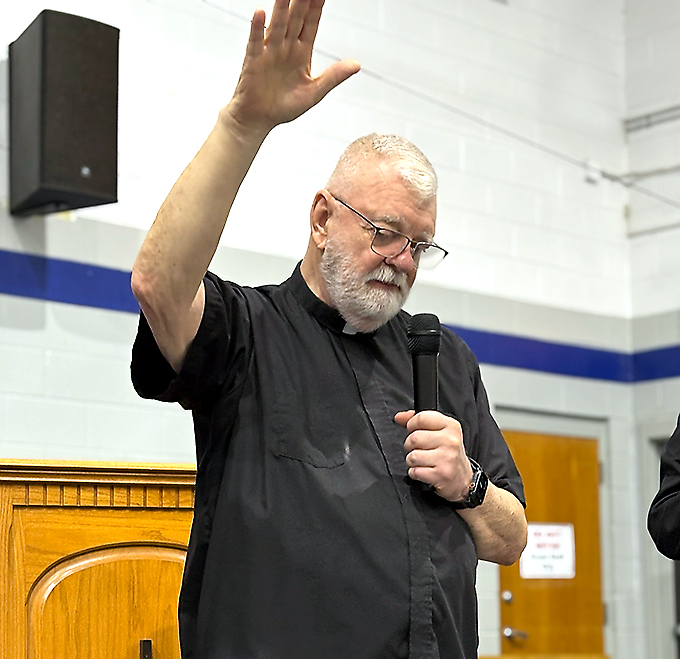Disorder that affects facial nerve named for Scottish surgeon
Published 3:58 pm Wednesday, August 26, 2009
Health Watch By Steve Mullenix
Special to The North Jefferson News
Each week, we try to write our articles about something of interest to the community.
A couple of weeks ago I got a call from a customer asking us to write about a relatively common, but somewhat unusual, condition called Bell’s Palsy.
Bell’s palsy is a form of temporary facial paralysis resulting from damage or trauma to one of the two facial nerves. The facial nerve, also called the seventh cranial nerve, is a paired structure that travels through a narrow, bony canal (called the Fallopian canal) in the skull, beneath the ear, to the muscles on each side of the face.
Bell’s palsy is named for Sir Charles Bell, a 19th century Scottish surgeon, who was the first to describe the condition. The disorder, which is not related to stroke, is the most common cause of facial paralysis. Generally, Bell’s palsy affects only one of the paired facial nerves and one side of the face. However, in rare cases, it can affect both sides.
Symptoms
Because the facial nerve has so many functions and is so complex, damage to the nerve or a disruption in its function can lead to many problems.
Symptoms of Bell’s palsy vary from person to person and range in severity from mild weakness to total paralysis. Those symptoms may include twitching, weakness or paralysis on one or both sides of the face, drooping of the eyelid and corner of the mouth, drooling, dryness of the eye or mouth, impairment of taste, and excessive tearing in one eye.
Most often these symptoms, which usually begin suddenly and reach their peak within 48 hours, lead to significant facial distortion.
Other symptoms may include pain or discomfort around the jaw and behind the ear, ringing in one or both ears, headache, loss of taste, hypersensitivity to sound on the affected side, impaired speech, dizziness, and difficulty eating or drinking.
Causes
Bell’s palsy occurs when the nerve that controls the facial muscles is swollen, inflamed, or compressed, resulting in facial weakness or paralysis.
Exactly what causes this damage, however, is unknown. Most scientists believe that a viral infection such as viral meningitis or the common cold sore virus, herpes simplex, causes the disorder.
They believe that the facial nerve swells and becomes inflamed in reaction to the infection, causing pressure within the Fallopian canal and leading to an infarction (the death of nerve cells due to insufficient blood and oxygen supply). In some mild cases (where recovery is rapid), there is damage only to the myelin sheath of the nerve. The myelin sheath is the fatty covering-which acts as an insulator-on nerve fibers in the brain.
The disorder has also been associated with influenza or a flu-like illness, headaches, chronic middle ear infection, high blood pressure, diabetes, sarcoidosis, tumors, Lyme disease, and trauma such as skull fracture or facial injury.
How is it treated?
There is no cure or standard course of treatment for Bell’s palsy. The most important factor in treatment is to eliminate the source of the nerve damage.
Bell’s palsy affects each individual differently. Some cases are mild and do not require treatment as the symptoms usually subside on their own within two weeks.
For others, treatment may include medications and other therapeutic options. Facial massage and exercises may help prevent permanent contractures (shrinkage or shortening of muscles) of the paralyzed muscles before recovery takes place. Moist heat applied to the affected side of the face may help reduce pain.
Other therapies that may be useful for some individuals include relaxation techniques, acupuncture, electrical stimulation, biofeedback training, and vitamin therapy (including vitamin B12, B6, and zinc), which may help nerve growth.
In general, decompression surgery for Bell’s palsy, to relieve pressure on the nerve, is controversial and is seldom recommended. On rare occasions, cosmetic or reconstructive surgery may be needed to reduce deformities and correct some damage such as an eyelid that will not fully close or a crooked smile.
What is the prognosis?
The prognosis for individuals with Bell’s palsy is generally very good. The extent of nerve damage determines the extent of recovery. Improvement is gradual and recovery times vary.
With or without treatment, most individuals begin to get better within two weeks after the initial onset of symptoms and most recover completely, returning to normal function within three to six months. For some, however, the symptoms may last longer. In a few cases, the symptoms may never completely disappear.
For more information, visit www.bellspalsyresearch.com or www.rarediseases.org.
Steve Mullenix (R.Ph) co-owns The Pharmacy in Mount Olive with his wife, Sherry Mullenix (J.D., R.N.). They can be reached at 631-1201.





